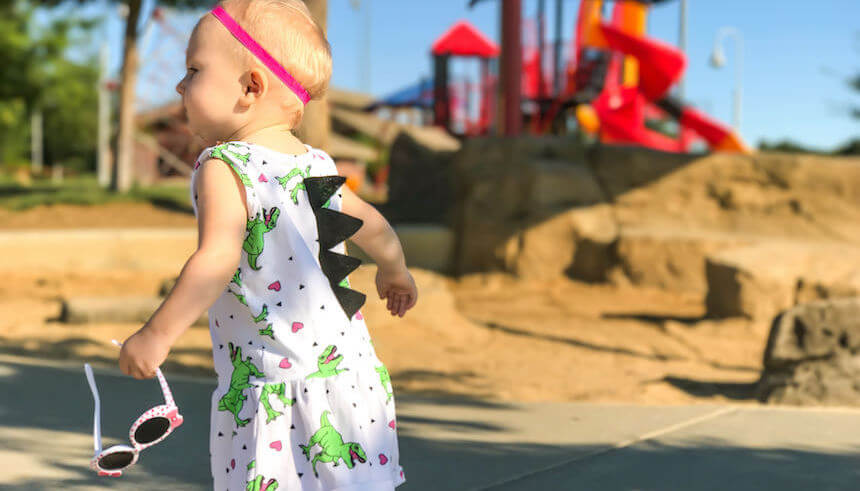A new gender-neutral children’s clothing shop is trying to defy stereotypes for boys and girls.
“I have a 3 1/2-year-old daughter who loves dinosaurs,” said Amandine Liepmann, 34, the co-founder and creative director of Mitz Accessories. “She was the inspiration for the clothing line. I created our best-selling dinosaur dress after I was unable to find her a dress with dinosaurs on it in mainstream retailers. Whenever she wore the dress, we received a lot of comments, and it led to discussions with other parents about the lack of options in children’s clothing. That’s where the idea for Mitz Accessories was born.”
Currently living in Ardmore, Pennsylvania, just outside of Philadelphia, Liepmann claimed there are more scientific studies of toys and environmental factors making a difference in children than specific studies on gender-neutral clothing.
“However, it’s important to note that they’re studying the same focus as to whether or not removing potentially limiting gender stereotypes from a child’s environment has positive impacts on children,” she said.
According to sciencedirect.com, evidence has shown that gender-neutral practices in toys and the environment for children change their perceptions as to the capabilities and potential of boys and girls. Conversely, what we see when gender stereotypes are present for children and enforced through movies, television, clothing, toys and books is that girls start to see themselves as less smart than their male counterparts by the age of 6 years old.
“An interesting byproduct of gender-neutral clothing is how people speak with children. We’ve received countless feedback from parents about how children who wear our clothing receive comments that shift away from gender and more toward the innate preferences of the child. For example, instead of telling a girl she’s pretty or cute, or a boy is tough and wild, even though those are well-intentioned comments, the comments tend to be more about the child’s interests. For example, someone might roar or ask a girl if she likes dinosaurs or ask a boy if he likes the color purple,” she said.
Sweden is the fourth most gender-equal country in the world, and she is inspired by those forward-thinking countries as well. And it’s not just girls who get the short end of the stick.
“Parents of boys reported a lack of colors – specifically the colors pink and purple. They also reported that certain animals such as cats, were regulated as a ‘girls’ animal. Interestingly, cats are predominantly featured on girls clothes and dogs on boys. Parents of girls wanted more STEM [science, technology, engineering, math] representation. I wanted to make a high-quality product that could be passed down easily and could be worn by a boy or a girl. I also wanted the clothing to be comfortable and easy to run, jump and play all day,” she said.
Born and raised in Michigan, she moved to the East Coast after teaching English at Eastern Michigan University to take a job with Jumpstart for Young Children, an early literacy nonprofit.
“Growing up, I had a gender-fluid family member. I was given a unique perspective on gender and gender expression from an early age. I learned it’s critically important to support and love people for who they are,” she said.






























